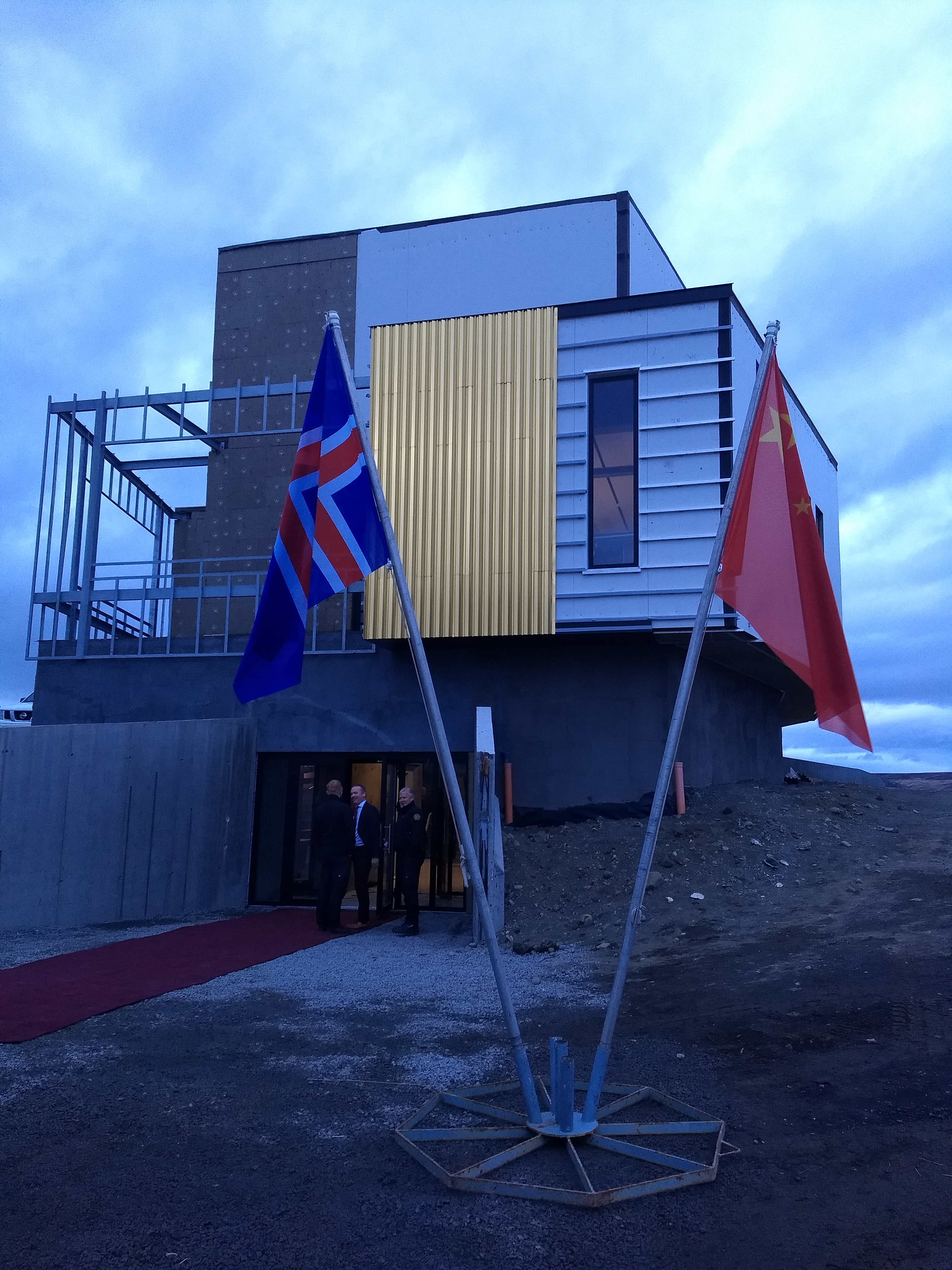A new China-Iceland Arctic science observatory is already expanding its focus
Launched as an aurora observatory, the facility already has plans to incorporate other areas of study.

It began as an aurora observatory — a place to improve atmospheric observations and space science in northern Iceland, at a rural outpost an hour or so from Akureyri. But it soon became a much more ambitious Arctic research facility.
In invitations to the recent grand opening, the facility was called the China-Iceland Joint Aurora Observatory. But by the time Chinese and Icelandic officials unveiled the three-story facility last week in a public ceremony, its name had morphed into the China-Iceland Joint Arctic Science Observatory (though the acronym remained CIAO).
The facility will expand its focus to climate change, satellite remote sensing, geosciences, oceanography, fisheries and more, officials said.
“China is highly concerned [about] Arctic changes and its global consequences,” said Dr. Huigen Yang, the director of the Polar Research Institute of China, which partnered with Iceland to create the observatory. He sees this scientific outpost as an opportunity to learn more about all aspects of the Arctic environment, not just space.
It is yet another indication of China’s growing interest in the region — and the significant investments it is prepared to make.
“We would never, ever, have been close to having anything like this without their cooperation,” said Halldor Johannsson, vice-chair of the observatory. “They have basically paid for all of it.”
He pointed out that although Iceland is known for its northern lights, the country only has a handful of scientists who focus on aurora research.
CIAO will change all of that, its founders hope.
The land upon which it is built belongs to an Icelandic nonprofit called Aurora Observatory. A farmhouse nearby can house up to eight researchers at a time.
The observatory itself is nearly finished; the exterior will be wrapped in gold-colored panels, and the first floor will host a museum to attract the 500,000 tourists who drive through this region every summer.
Outside the observatory, rows of aurora sensors line up neatly across a gravel field. Those are the instruments “that basically listen to the aurora,” Johannsson explained. “They can monitor it even though it’s cloudy.”
Inside, real-time images of the cloud-coated globe flicker on TV screens mounted to the wall. A man wearing a virtual-reality headset peers up at the ceiling and slowly scans from side to side.
“He’s watching the aurora,” one of the observatory technicians explains.
The instruments and observatory, as it is currently built, are still optimized for aurora and space weather observations.
But Dr. Yang wants to add more buildings and instruments to support the center’s expanding focus on Arctic science.
“We will start long-term and comprehensive Arctic environment and climate monitoring,” he said.
The observatory is becoming a national center on par with China’s other major science facilities, he said, that is open to researchers from all over China — and the world.
“Before that, we have to set up the scientific instrumentation,” he said.
He wants to build more buildings and install more sensors and detectors — if, he added, Chinese and Icelandic people “have a common interest” in doing so.
Zhijan Jin, the Chinese ambassador to Iceland, called the observatory “a stop in the long journey of cooperation” between China and Arctic countries.
“In the years to come, we have a lot of plans and dreams that we could realize if we work together,” he said.
In the past, critics have worried Beijing might use the observatory to monitor more than the northern lights — including NATO airspace.
Halldor Johannsson, the vice-chair, dismissed concerns about China using the facility for non-scientific purposes.
“I’ve had that question many times,” he said. There was no equipment in the building capable of telling China anything they didn’t already know, he said.
“If he’s a spy, then I’m James Bond,” Johannsson said, gesturing to one of his Chinese colleagues.
Ólafur Ragnar Grimsson, the former president of Iceland, told ArcticToday that building the facility “in a place that is as open and democratic and transparent as Iceland is a message in itself” from China about its commitment to scientific cooperation.
Grimsson said the melting of Arctic sea ice and the Greenland ice sheet has “tremendous consequences” for China, including extreme weather patterns and rising sea levels.
“So, the Arctic has a big influence on the future of China,” he said.
Jin, the ambassador, highlighted the scientific concerns the observatory might address — but he left the door open for China to take a role in other trans-national issues that could arise in the Arctic.
“The issues of Arctic affairs have gone far beyond the boundaries of Arctic countries and regions,” Jin said. “Just like what happened in climate change.”
In Italian, Jin said, the word “ciao” means hello. But in Mandarin, it means “bridge.” That’s how China sees this facility, he said — as a bridge to link science and the public, but also as a bridge to connect Beijing more closely with the Arctic.
Iceland, eager for investments, welcomes the interest.
“None us might have comprehended that the Arctic would become a crucial place for understanding the universe,” Grimsson said at the opening of the observatory.
Yet the Arctic’s importance is changing as quickly as its environment — and this new facility will help scientists and visitors alike begin to make sense of these changes.
“Anybody who wants to understand our future can come and see,” Grimsson said.









